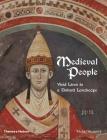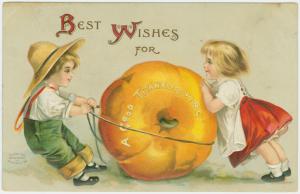Medieval People
In Medieval People: Vivid Lives in a Distant Landscape, historian Michael Prestwich [author of Knight: The Medieval Warrior's (Unofficial) Manual] challenges generalities about the Middle Ages* by looking at the specific: biographies of 69 people who lived between 800 and 1500, a period that stretches from Charlemagne's empire to the early Renaissance.
Prestwich's choice of title invites inevitable comparison with Eileen Power's classic Medieval People (1924). Like Power, Prestwich is interested in giving history what Power called the "personal treatment": making the past accessible for the general reader by putting a face on it. Many of his essays deal with the usual suspects (kings, popes, emperors). But Prestwich moves beyond the expected. He recognizes the importance Muslim scholars and the Central Asian conquerors Ghengis Khan and Tamerlane** played in shaping medieval Europe. He includes biographies of illustrious women, noting that their contributions were more remarkable than those of their male counterparts because of the difficulties they faced in making their voices heard. To the extent that quality sources are available, he includes individuals from the middle classes or lower: merchants, mathematicians, artists, a leper and a French peasant leader, Guillaume Cale. (There are inherent limitations on writing about individuals on the fringes of power. As Prestwich points out, it is impossible to consider the career of a specific hermit unless his contemporaries wrote about him at some length.)
Written with authority and occasional humor, illustrated with both contemporary artwork and modern photographs of key historical sites, Prestwich's Medieval People brings the Middle Ages to life in all its complexity and diversity. Eileen Power would have approved.
*As I've mentioned before, the terms Middle Ages and medieval are culturally charged. Prestwich is explicit about the pitfalls and uses both terms with awareness.
**Or more accurately Chinggis Khan and Timur.
Much of this review appeared previously in Shelf Awareness for Readers
Stopping to Give Thanks
It's almost Thanksgiving and things are hopping at Margin Central. The first out-of-town guests have arrived. I have turkeys thawing in the refrigerator* and lists of my lists on the kitchen bulletin board.
It's going to be a busy few days, so I'm taking this week off from blogging. But I wanted to take a moment to thank all you who read History in the Margins, send me e-mails, make comments, ask hard questions, point out my mistakes, and generally keep me on my toes. Without you, I'd just be talking to myself.
*Yes, more than one turkey. And a ham. We're going to be a big group this year.
Stalingrad
The Pritzker Military Library offers a smaller event alongside its On War symposium: a chance for a limited number of people to meet with the winner of the year’s lifetime achievement award to discuss one of his books. Last year I wasn’t bright enough to sign up. This year I didn’t hesitate. The chance to hear Antony Beevor* discuss one of his most popular books, Stalingrad, The Fateful Siege: 1942-1943 was too good to miss.

Soviet soldiers waiting for the German attack
Reading Stalingrad in preparation for the “book club”, I noticed that Beevor tends to stay in the German point of view. Listening to him talk about writing the book made it clear why he does. As he tells it, he researched the book in the early 1990s during a brief window of opportunity when Russia opened former Soviet archives to foreign researchers**--a period that a fellow researcher described as like the wild west, complete with bribery and the archival equivalent of cattle rustling. The military officers who controlled the archives were not happy that they had been ordered to open them and they greeted researchers with what Beevor described as a mixture of paranoia and naiveté. I found his description of the limitations the “archivists” put on his research, the ways he and his Russian research assistant stretched those limits out of shape, and his fears that they would seize his notes as gripping as any thriller.
The result of his research is an extraordinary book. Stalingrad is more than simple military history. Beevor places the battle in its political, social and military context, beginning with the events leading up to the Nazi invasion of Russia on June 22, 1941 and ending with post-war Stalinist paranoia. He describes not only troop movements and military strategy, but the impact of those movements on civilians and soldiers alike: German soldiers ill-equipped for the Russian winter stealing clothes off dead and dying Russians, women and children digging defenses outside the walls of Moscow and later Stalingrad, peasants harvesting tomatoes and melons as fighters take off and land on a field converted to an airfield. He offers quick portraits of individuals from both sides of the conflict, from the highest officer to the lowest man on the front line, soldier and civilian. He gives us instances of personal courage, political cowardice--and vice-versa. Above all, he is the master of the telling detail. (Want to know how cold it was on the march to Moscow? So cold that Germans used the frozen bodies of Russian soldiers to build corduroy roads when birch trees weren’t available.***)
Beevor’s image of war on the Eastern Front is brutal on almost every level. Perhaps the most horrifying aspect of Beevor’s Stalingrad is his portrayal of the conflict between Germany and Russia in terms of the competing megalomania, paranoia and obsessions of Hitler and Stalin. Tragedy doesn’t begin to describe the results.
* Yes, this is the same Antony Beevor I argued with in a recent post. Just because I disagree with him on a point of historiographical policy does not lessen my admiration for his work. The man can write.
**The previous day, historian Gerhard Weinberg had pointed out that British and American scholarship on World War II traditionally focused on the western front not only due to national chauvinism but because prior to 1989 much of the source material dealing with the Eastern Front was inaccessible to Western scholars. So obvious, and yet something I had never considered. *head smack*
***That image may stay with me forever as an illustration not only of extreme weather, but of the fact that it is easier to wage war if you do not think of your enemy as human.






